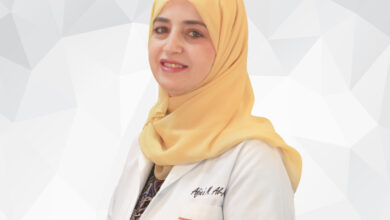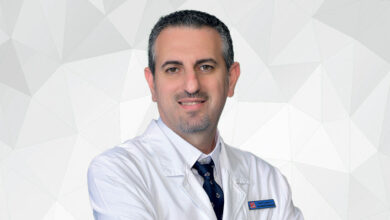 By Dr. Mazen Bashtawi, FRCOG FACOG, Consultant in Obstetrics and Gynaecology, Subspecialist in Gynaecological Oncology and Advanced Laparoscopy at Al-Ahli Hospital / Qatar
By Dr. Mazen Bashtawi, FRCOG FACOG, Consultant in Obstetrics and Gynaecology, Subspecialist in Gynaecological Oncology and Advanced Laparoscopy at Al-Ahli Hospital / Qatar
Endometriosis has been estimated to affect up to 10% to 15% of reproductive-age women. Most women with endometriosis have a delay on average of 7 years from the onset of symptoms until the diagnosis is made, the symptoms could be irregular bleeding, menstrual dysfunction, pain and infertility.
The association between endometriosis and infertility is well supported throughout the literature, but a definite cause-effect relationship is still controversial.
The prevalence of endometriosis increases dramatically to as high as 25% to 50% in women with infertility, and 30% to 50% of women with endometriosis have infertility. The fecundity rate in normal reproductive-age couples without infertility is estimated to be around 15% to 20%, whereas the fecundity rate in women with untreated endometriosis is estimated to range from 2% to 10%.
Women with mild endometriosis have been shown to have a significantly lower probability of pregnancy during a period of 3 years than do women with unexplained fertility.
Ovarian endometriomas have always been subject for controversy, controversy on pathogenesis and controversy on treatment. We see many patients coming with endometriomas and infertility, these patients usually get conflicting advice whether to go for surgery and remove endometrioma or proceed for IVF.

Ovarian endometrioma affects 17-44% of women with endometriosis, endometriomas also known as chocolate cysts containing thick old hemorrhage that appears as brown fluid. In 50% of cases the endometriomas are bilateral, they are more frequently located in the left ovary. Pathogenesis still controversial many theories trying to explain the nature and the cause of this disease. The most acceptable theory is invagination of ovarian cortex secondary to implant of metaplastic cells in the coelomic epithelium. Pelvic ultrasound is usually enough to make the diagnosis of endometrioma, however MRI is the gold standard.
The causes of infertility in women with endometrioma can be attributed to many factors such as adhesions and blockage of the fallopian tube, inflammatory response may participate in degradation of oocyte and sperms. Endometrioma might lead to poor embryo quality, poor ovarian reserve and inflammation affecting endometrial receptivity.
Management ovarian endometrioma can be complex and should be individualized, the optimal treatment will depend on the patient age, severity of pain, characteristics of the cyst, unilateral or bilateral, the presence of coexisting deep infiltrating lesion and clinical history of previous surgery. Laparoscopic surgeons believe that surgery should be the first step in management of endometriomas as these lesions are less likely to disappear on their own, surgery will improve pain, improve fertility, reduce risk of ovarian cancer, reduce risk of pelvic infection at the time of oocyte retrieval, reduce risk of contamination by the chocolate material which affects the quality of oocytes, and surgery is less costly compared to IVF treatment.
While IVF specialists believe that surgery might increase the damage to the ovary and further reduction ovarian reserve. Royal College of obstetricians and gynaecologists (RCOG) guideline advised for surgery before IVF in highly symptomatic women and those with good ovarian reserve, patients with unilateral large cysts, and cysts with suspicious features.
If surgery is to be contemplated, laparoscopy is the surgery of choice, as it offers quicker recovery and resumption of everyday activities. Surgeon’s expertise and technique is of paramount importance to minimize damage to the ovaries. The best technique is to strip the endometrioma wall, but it is not always possible to do in all cases.
Laparoscopic cystectomy for ovarian endometriomas greater than 4 cm improves fertility compared to cyst drainage and coagulation, which is associated with a high risk of cyst recurrence. Proper assessment before surgery is extremely important as a significant number of women with endometrioma had reduced ovarian reserve due to pathology itself. Transvaginal aspiration before IVF cycle is useless, dangerous and should not be contemplated.
Postoperative medical therapy has been advocated as a means of eradicating residual endometriotic implants in patients with extensive disease in whom resection of all implants is impossible or inadvisable. Postoperative hormonal therapy also may treat microscopic disease; however, none of these treatments has been proven to enhance fertility. But these therapies are sometimes to reduce pain.















